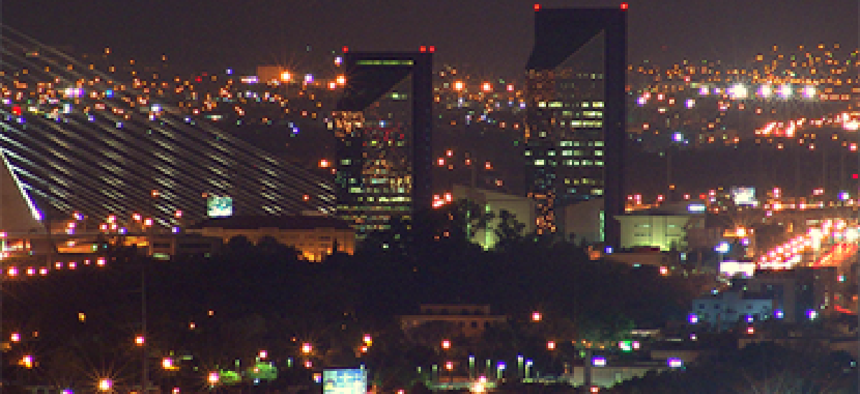First impressions of Mexico

Steve Kelman is visiting Mexico as part of a Harvard University program for Mexican government managers.

Monterrey, Mexico, has a reputation for drug-related violent crime, but also an active nighttime social scene, reports Steve Kelman. (Photo: Wikipedia
Except for a half-day in Tijuana (which was part of a visit to San Diego) and a week in Cancun – neither of which really counts as spending time there -- I have never truly visited Mexico. However, I agreed recently to serve as faculty chair for an executive education program at the Harvard Kennedy School for senior Mexican career government employees.
The deciding factor, although I speak no Spanish and know little about the country, was that it would give me the opportunity to understand better this important country so close to and so closely linked (through trade and immigration) to the United States. I’ve been busily reading books about Mexico for the last six weeks, and now I have come for a brief visit, to talk with some local experts and take in a little of a feel for the country.
In my next post, I will write a bit more seriously about what I’m learning. In this one, I will give some more immediate surface impressions, with special emphasis on the security situation in the wake of the Mexican government’s aggressive anti-drug wars, whose brutal results, in terms of shootouts, innocent people caught in crossfire, and gruesome violence have gotten a lot of attention in the US.
The first thing to note is that I have never seen a place with so many police on the street as Mexico City. They swarm everywhere. (There are some soldiers on the street as well; one afternoon, on returning to my hotel, there were two soldiers with submachine guns just outside the door.) Mexico City is particularly rich in federal police – Mexico has both local and federal police forces – who are generally regarded as better trained and less corrupt than the local officers. There are also private security guards outside of many stores – and not just the fancy branded stores such as Louis Vuitton -- and many restaurants.
The police presence seems to be producing results. My thought before I came was absolutely to stay off the streets after dark. But both Mexican contacts and personnel at my hotel (who probably have an incentive to be cautious) told me there was no problem walking to and from my hotel, in an upper-middle class area of the city called Polanco, to restaurants nearby. And indeed, when I ventured outside for dinner, I saw a significant number of single women on the streets, which to me is a sign that things are pretty safe.
After Mexico City I went to Monterrey (Mexicans told me that this is the correct Spanish spelling and that “Monterey,” the name of our California city, is spelled incorrectly). This city, two hours by car from Texas in northern Mexico and one of the centers of Mexican industry and foreign manufacturing investment, has been one of the major locales of gun battles between drug cartels fighting for turf in an environment where the government crackdown had made it harder to earn money. Here, people did tell me under no circumstances to hail a taxi on the street, but instead to use only taxi companies vetted by local hotels.
People also told me they had changed their lives in response to the violence. They don’t go outside late at night (though one father told me parents had a difficult time imposing such restrictions on their teenage children). People have hesitated about driving fancy cars, which can make them the targets of car theft or kidnapping; one person told me many people did not wash their cars so they would appear less attractive to thieves or kidnappers. Nonetheless, when returning to my hotel – in an authorized taxi! – at about 8 p.m. (early by Mexican standards to be sure, but well after dark), I saw lively street activity downtown, with lots of people lounging around on the streets.
Finally, I noticed something interesting in going through airport security inside Mexico. The security agents who check boarding passes and photo ID’s are all disabled people in wheelchairs. An interesting way to provide very useful employment for people with disabilities. Idea for TSA?
One more thing that was interesting: many signs in Mexico are wishing people “Feliz Fiestas” (Happy Holidays) instead of “Feliz Navidad” (Merry Christmas), particularly noteworthy in a country far less multi-religious than the US and in light of the sometimes ideology-tinged debates on the proper seasonal greeting.
NEXT STORY: BYOD: Not so inevitable after all


